Table of Contents
ToggleIn a world overflowing with choices, the term “product” pops up everywhere, from the latest gadget to that oddly satisfying avocado slicer. But what exactly is a product? It’s not just a fancy label slapped on a box; it’s the heart and soul of what businesses offer to consumers. Whether it’s a tangible item or a service that makes life easier, products are the unsung heroes of everyday life.
Definition Of A Product
A product represents a core offering from businesses that improve consumers’ lives. It encompasses both physical items and services.
Tangible vs. Intangible Products
Tangible products are physical items that consumers can touch and use. Examples include electronics, furniture, and clothing. Intangible products lack a physical form but provide value, such as services, software, or experiences. Each product type serves a distinct purpose in meeting consumer needs and preferences.
Examples Of Different Product Types
Numerous product types exist in various categories. Consumer goods include items like groceries and personal care products. Industrial goods consist of machinery, tools, and raw materials. Services encompass education, health care, and entertainment, catering to diverse market demands. Each example shows the wide range of products available to consumers and businesses alike.
The Importance Of Products In Business


Products play a critical role in business, serving as the primary means by which companies meet customer needs and preferences. Their influence extends beyond sales figures, impacting brand reputation and customer loyalty.
Products As Solutions
Products serve as solutions to specific problems. A smartphone addresses communication needs while a yoga class caters to wellness goals. Recognizing products in this context emphasizes their utility. Companies design offerings with consumer challenges in mind, ensuring they deliver effective resolutions. Market research often identifies gaps that products can fill, guiding innovation. Products such as water filters or energy-efficient appliances exemplify how solutions improve daily life.
The Role Of Products In Customer Satisfaction
Customer satisfaction hinges on product quality and relevance. Engaging offerings resonate with consumers, fostering loyalty. When products meet expectations, they enhance trust, which directly correlates with repeat business. Satisfaction also stems from unique features that address consumer desires. Positive experiences with products can lead to word-of-mouth promotion. Feedback plays a vital role, as listening to customer insights can drive necessary improvements. Ultimately, companies that prioritize customer satisfaction through high-quality products thrive in competitive markets.
Product Development Process
The product development process involves several key stages that transform an idea into a market-ready offering. Each phase is crucial for ensuring that the final product meets consumer needs and expectations.
Ideation And Concept Development
Ideation generates a range of ideas focused on addressing consumer pain points. Teams brainstorm potential features and benefits to create viable concepts. One technique involves using mind mapping to visualize connections among ideas. Candidate concepts undergo discussion and refinement, fostering innovative thinking. This stage culminates in selecting the most promising concepts for further evaluation.
Market Research And Validation
Market research identifies consumer preferences and market gaps. Surveys, interviews, and focus groups provide insights into buyer motivations and trends. Data gathered during this phase informs product positioning and differentiates it from competitors. Validation is critical, ensuring consumers see the value in proposed solutions. Feedback at this stage can significantly influence product direction and adjustments.
Prototyping And Testing
Prototyping transforms concepts into tangible representations for evaluation. Initial designs may include sketches or digital models that allow for visual assessment. Testing prototypes involves gathering consumer feedback to identify strengths and weaknesses. Iteration based on this feedback refines the product further, ensuring it aligns with user needs. Successful testing leads to final adjustments before the product launch.
Product Life Cycle
The product life cycle outlines the stages a product goes through from inception to retirement. Each stage affects marketing and innovation strategies.
Introduction Stage
The introduction stage marks a product’s debut in the market. Companies invest heavily in marketing to raise awareness and generate interest. It’s common for sales to be low initially, as consumers may not yet understand the product’s value. Despite the challenges, this phase is crucial for gaining market insight, gathering feedback, and making adjustments. Companies focus on refining their messaging and offering incentives to encourage early adoption. Effective market research during this stage sets the foundation for future growth.
Growth Stage
The growth stage sees increasing sales and market acceptance. Success in this stage often leads to more significant investments in advertising and distribution channels. Competitors may enter the market, prompting enhanced marketing efforts to differentiate the product. Companies often expand features or variations to capture broader consumer segments. Customer feedback becomes invaluable, guiding incremental improvements that enhance product appeal. Maintaining quality and relevance during growth attracts loyal customers and strengthens brand reputation.
Maturity And Decline Stages
The maturity stage signals peak sales and market saturation. During this phase, competition intensifies, prompting businesses to adopt pricing strategies or promotional offers to maintain market share. Innovations slow down as companies focus on maximizing efficiency and profitability. Eventually, products enter the decline stage, where sales diminish due to evolving consumer preferences or new technologies. Companies may choose to discontinue the product or pivot to revitalization strategies, such as rebranding or launching alternative offerings. Monitoring each stage ensures companies adapt strategies effectively, aligning with market demand.
Understanding what constitutes a product is vital for both consumers and businesses. Products are more than mere items; they represent solutions that enhance daily life and meet specific needs. The distinction between tangible and intangible offerings highlights the diverse ways in which products can deliver value.
Companies that prioritize product quality and consumer feedback are better positioned to thrive in competitive markets. By navigating the product development process and recognizing the stages of the product life cycle, businesses can adapt their strategies effectively. This adaptability not only fosters customer satisfaction but also builds lasting loyalty, ensuring that products remain relevant in an ever-changing landscape.




